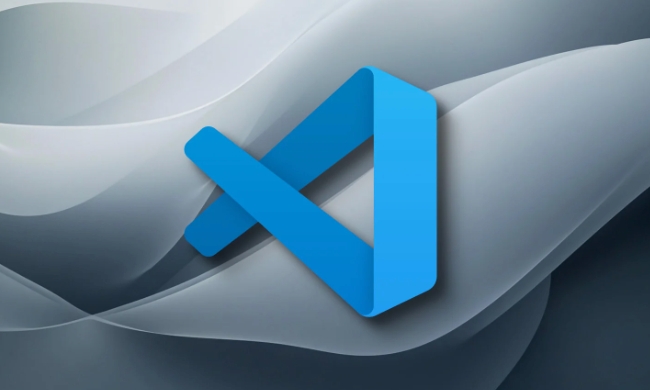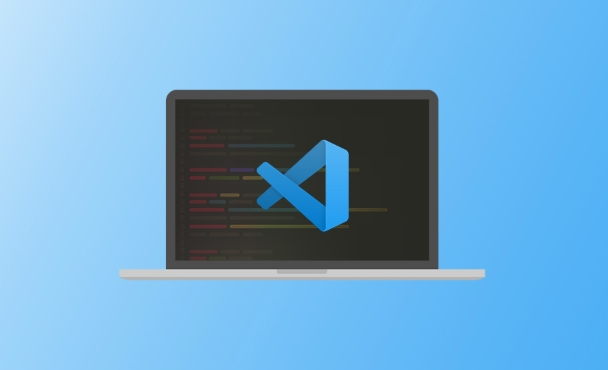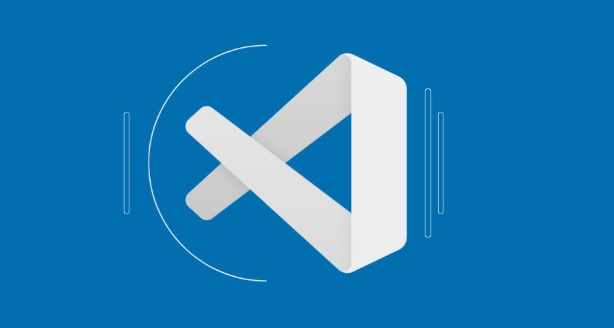How to set up a new profile in vscode?
Open Command Palette with Ctrl+Shift+P (Cmd+Shift+P on macOS). 2. Type "Profiles: Create Profile", select it, and name the profile (e.g., "Web Development"). 3. VS Code restarts with a clean profile—install extensions and customize settings as needed. 4. Switch profiles via Command Palette with "Profiles: Switch Profile" or use the profile icon in the bottom-left corner. Each profile has separate settings, extensions, and UI states, and must be set up individually unless extension syncing is enabled, ensuring isolated and organized development environments.

Setting up a new profile in VS Code helps you separate different work environments—like personal projects, work setups, or specific language configurations—without mixing settings, extensions, or UI states. Here’s how to create and manage a new profile.

1. Open the Command Palette
Press Ctrl+Shift+P (or Cmd+Shift+P on macOS) to open the Command Palette.
2. Create a New Profile
Start typing "Profiles: Create Profile" and select it from the list.

- You’ll be prompted to enter a name for your new profile (e.g., "Web Development", "Python Projects", or "Work").
- After naming it, VS Code will create a fresh profile with:
- Clean set of user settings
- No installed extensions (you’ll need to install them again)
- Separate UI layout and panel states
Once created, VS Code restarts with the new profile active.
3. Customize the New Profile
Now that you're in the new profile:

- Install required extensions.
- Adjust settings via
File > Preferences > Settings(orCtrl+,). - Modify keyboard shortcuts or themes as needed.
These changes only affect the current profile.
4. Switch Between Profiles
To switch back or choose another profile:
- Open the Command Palette again.
- Run "Profiles: Switch Profile".
- Select the profile you want to use.
- VS Code will restart using that profile’s environment.
Note: Each profile has its own extensions, so you may need to reinstall extensions for each one unless you enable extension preferences syncing (see below).
Optional: Manage Profiles from the UI
- Click on the profile icon in the lower-left corner of the VS Code window.
- This opens a menu where you can:
- Create a new profile
- Switch between existing profiles
- Delete unused profiles
- Open profile preferences
Tips
- Use profiles to isolate workspaces with conflicting extension needs (e.g., Python vs JavaScript tools).
- If you use multiple machines, consider enabling Settings Sync (via GitHub), but note that profiles themselves don’t sync—only settings and extensions within a profile can be synced.
- Profiles are stored in separate folders under VS Code’s user data directory (location depends on OS).
Creating a profile is fast and keeps your development environments clean. It's especially useful if you juggle different types of projects or teams.
Basically, just use the "Create Profile" command and go from there.
The above is the detailed content of How to set up a new profile in vscode?. For more information, please follow other related articles on the PHP Chinese website!

Hot AI Tools

Undress AI Tool
Undress images for free

Undresser.AI Undress
AI-powered app for creating realistic nude photos

AI Clothes Remover
Online AI tool for removing clothes from photos.

Clothoff.io
AI clothes remover

Video Face Swap
Swap faces in any video effortlessly with our completely free AI face swap tool!

Hot Article

Hot Tools

Notepad++7.3.1
Easy-to-use and free code editor

SublimeText3 Chinese version
Chinese version, very easy to use

Zend Studio 13.0.1
Powerful PHP integrated development environment

Dreamweaver CS6
Visual web development tools

SublimeText3 Mac version
God-level code editing software (SublimeText3)
 VSCode settings.json location
Aug 01, 2025 am 06:12 AM
VSCode settings.json location
Aug 01, 2025 am 06:12 AM
The settings.json file is located in the user-level or workspace-level path and is used to customize VSCode settings. 1. User-level path: Windows is C:\Users\\AppData\Roaming\Code\User\settings.json, macOS is /Users//Library/ApplicationSupport/Code/User/settings.json, Linux is /home//.config/Code/User/settings.json; 2. Workspace-level path: .vscode/settings in the project root directory
 VSCode setup for Java development
Jul 27, 2025 am 02:28 AM
VSCode setup for Java development
Jul 27, 2025 am 02:28 AM
InstallJDK,setJAVA_HOME,installJavaExtensionPackinVSCode,createoropenaMaven/Gradleproject,ensureproperprojectstructure,andusebuilt-inrun/debugfeatures;1.InstallJDKandverifywithjava-versionandjavac-version,2.InstallMavenorGradleoptionally,3.SetJAVA_HO
 How to configure Prettier in VSCode?
Jul 18, 2025 am 02:20 AM
How to configure Prettier in VSCode?
Jul 18, 2025 am 02:20 AM
Prettier configuration steps include installing plug-ins, setting default formatting tools, creating configuration files, enabling save automatic formatting, and other precautions. First, install the Prettier plug-in of VSCode and set it as the default formatting tool; second, create the .prettierrc file in the project root directory to define the format rules; then enable "FormatOnSave" in the VSCode settings; finally pay attention to installing local Prettier, ensuring the configuration file is correct, and troubleshooting plug-in interference problems.
 What is the difference between VSCode and Visual Studio
Jul 30, 2025 am 02:38 AM
What is the difference between VSCode and Visual Studio
Jul 30, 2025 am 02:38 AM
VSCodeisalightweight,cross-platformcodeeditorwithIDE-likefeaturesviaextensions,idealforwebandopen-sourcedevelopment;2.VisualStudioisafull-featured,Windows-onlyIDEdesignedforcomplex.NET,C ,andenterpriseapplications;3.VSCodeperformsfasteronlower-endma
 How to use VSCode settings sync with GitHub?
Jul 20, 2025 am 12:04 AM
How to use VSCode settings sync with GitHub?
Jul 20, 2025 am 12:04 AM
Use VSCode to set up synchronization to keep the multi-device development environment consistent. 1. Enable synchronization: Log in to your GitHub account, select "TurnonSettingsSync" through the command panel, and select sync content after authorization and upload to GitHubgist; 2. Synchronization of other devices: Enable synchronization function after logging in to your account and download existing configurations, VSCode will automatically restore settings and install plug-ins; 3. Manage synchronization status: Click the cloud icon in the lower right corner to view status, manually synchronize or compare synchronized data; 4. Notes: Only user settings are synchronized by default. Some plug-ins may not support synchronization. Exclusions can be manually adjusted to control synchronized content.
 VS Code shortcut for find in all files
Jul 21, 2025 am 12:50 AM
VS Code shortcut for find in all files
Jul 21, 2025 am 12:50 AM
ToquicklysearchacrossallfilesinVSCode,usethebuilt-inshortcutCtrl Shift F(Windows/Linux)orCmd Shift F(macOS)toopenthe"FindinAllFiles"panel,whichscansallfilesinthecurrentworkspace.Ensureyou'renotineditmodebypressingEsconcebeforeusingtheshortc
 VS Code shortcut to focus on explorer panel
Aug 08, 2025 am 04:00 AM
VS Code shortcut to focus on explorer panel
Aug 08, 2025 am 04:00 AM
In VSCode, you can quickly switch the panel and editing area through shortcut keys. To jump to the left Explorer panel, use Ctrl Shift E (Windows/Linux) or Cmd Shift E (Mac); return to the editing area to use Ctrl ` or Esc or Ctrl 1~9. Compared to mouse operation, keyboard shortcuts are more efficient and do not interrupt the encoding rhythm. Other tips include: Ctrl KCtrl E Focus Search Box, F2 Rename File, Delete File, Enter Open File, Arrow Key Expand/Collapse Folder.
 Where is the keybindings.json file in VS Code?
Jul 23, 2025 am 01:32 AM
Where is the keybindings.json file in VS Code?
Jul 23, 2025 am 01:32 AM
To find or edit the keybindings.json file for VSCode, you can operate it through the operating system specific path or command panel. The Windows path is C:\Users\\AppData\Roaming\Code\User\keybindings.json; macOS is /Users\/Library/ApplicationSupport/Code/User/keybindings.json; Linux is /home\/.config/Code/User/keybindings.json. If you are not sure about the path, press Ctrl Shift







